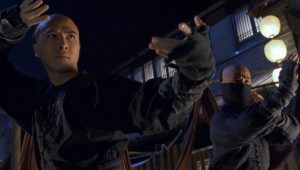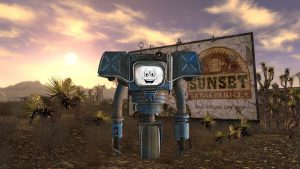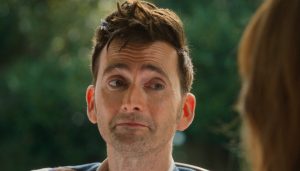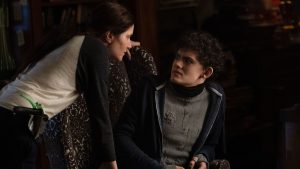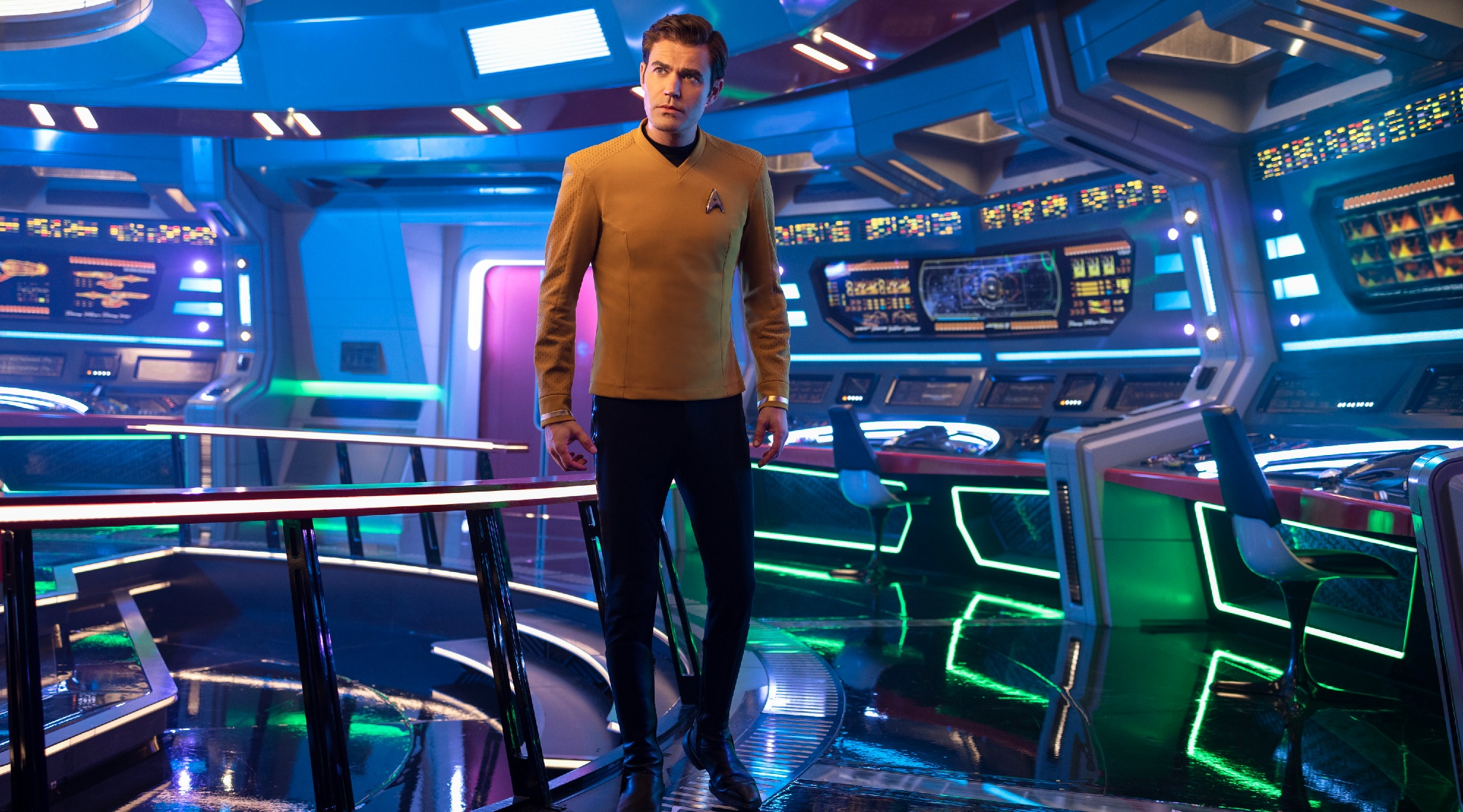
“So, you have questions about time travel?” asks Starfleet science officer Dr. Erin MacDonald in the fourth episode of Star Trek: Prodigy‘s second season. “You’ve come to the right place.”
Without question, time travel has long been a major part of the Star Trek. franchise. Kirk, Picard, and everyone else have bounced back and forward in time, whether to save the whales, hang out with Sarah Silverman, escape an evil AI, or save a young Khan.
But while these stories generally turn out to be a lot of fun, they’re not always clear. Like most big science fiction franchise, Trek often fudges the specifics of its time travel adventures, putting cool story ahead of scientific precision.
Fortunately, when Prodigy used real-life astrophysicist and aerospace engineer Erin Macdonald in an instructional video, it laid down Trek‘s time travel rules in detail, for the first time.
The Great, Collapsing Chain
“The simplest way to think of time travel is to think of events as a series of dominoes,” explains Macdonald. His statement is followed by images of dominoes falling, suggesting that one event leads to another. If one event changes, it’s like removing a domino, so that the rest of the line does not fall.
Well, more specifically, MacDonald says “big event,” which, again, makes sense. Strict adherence to the butterfly paradox, in which something as small as a butterfly flapping its wings can have major consequences, would prevent any time travel story.
Within the context of Prodigy, the big event is Chakotay launching the Protostar, which has massive consequences for the main cast and the civil war on Solum. Other major events in Trek time travel stories include Zephram Cochrane’s flight in First Contact, the Bell Riots in Deep Space Nine, and the various events of the Temporal Cold War on Enterprise.
But on the surface, that’s not really consistent with stories we’ve seen in the past. Take one of the first, and still the best, Trek time travel story of all time, “City on the Edge of Forever” from The Original Series. When Spock declares that “Edith Keeler must die,” its not because he’s jealous that Kirk has fallen for Joan Collins. It’s because her surviving a car accident that should have killed her would result in the Nazis getting the atomic bomb before America.
Somehow, according to “City on the Edge of Forever,” a social worker living is a major event. How does that make sense? To get that answer, we need to consult a higher power. We need a Traveler.
Travels With Wesley Crusher
Perhaps the most delightful part of Prodigy‘s second season is the arrival of Wesley Crusher, now a full-fledged Traveler. Although Wesley still has his sweater-heavy fashion sense and boundless enthusiasm, he also has a greater understanding of time and space. In other words, he’s essentially the Doctor (from Doctor Who, not Robert Picardo). As such, he’s the perfect person to finally give some structure to the franchise’s time travel mechanics.
Give or take an unnecessary cameo in Picard season two or a silent shot at the wedding of Troi and Riker in Star Trek: Nemesis, Wesley last appeared in the season seven The Next Generation episode “Journey’s End.” There, Wes drops out of Starfleet to study under a mysterious being called the Traveler, who appreciates Crusher’s genius and wants to teach him the secrets of time and space.
By the time Wes reappears in Prodigy, he has an omniscience that fits his go-getter personality. In between aggravating the Prodigy kids and going off on tangents, Crusher stops long enough to explain the way time travel works. More specifically, Wesley teaches the kids about alternate reality, explaining that there are “tons” of different universes in existence.
“Quantum timelines, alternate timelines, planes of existence—take your pick, I’ve been to all of them,” he enthuses. To illustrate his point, Wes pulls up a graphic that looks a lot like the image that the Ancient One showed Hulk in Avengers: Endgame. There’s a straight line in the middle, with branching lines coming off of it. According to this image, removing the domino by erasing a major event doesn’t really block the flow of time. Instead, it branches it, leading to a different timeline.
Trekkies saw this most obviously in 2009’s Star Trek. The Romulan Nero goes back in time to find Spock, and in the process destroys the USS Kelvin on the day of Kirk’s birth. Those actions didn’t erase everything from the Prime Timeline—as we’ve seen in Picard and other series, the destruction of Vulcan happened, as did the events before. Instead, it created an alternate timeline, which fans dubbed the Kelvin-verse.
Makes sense, right? Big events result in big changes, which means full on new timelines. The Romulans capture Earth and the Mirror Universe is born. The USS Kelvin gets destroyed and the Kelvin Universe is born.
But what about small events? What about Edith Keeler living in TOS or Rios staying behind in the 21st century on Picard?
Weaving the Loom
While Wesley and MacDonald offer useful and linear metaphors to help explain time travel, those are just introductions—literally Temporal Mechanics 101. Wes provides a better description when he describes the various timelines as a grand tapestry, one that can unravel as easily as a sweater.
Thus, he and the other Travelers hold the tapestry together by finding mistakes and other issues and fixing them. However, when the Temporal Cold War seen on Enterprise turned “hot,” the fallout overtaxed the Travelers, causing more holes than they could fix.
Much of the second half of Prodigy season two deals with Wes and the kids fighting to save their reality by fixing the hole left when they prevented Chakotay from sending off an unmanned Protostar. Their chief antagonists in these parts of the season are the Loom, trans-dimensional scavengers who devour the remnants of changed time (think Stephen King’s The Langoliers).
With the introduction of the Loom, and more explanation about the role of the Travelers, we finally have a clear picture of the other side of Trek time travel. Big events cause whole new timelines, but small events can either be devoured or fixed. Thus, Edith Keeler living would’ve either forced the Travelers to do what Kirk wouldn’t, or would have sent the Loom to descend on the former timeline, devouring what was left.
We’ve seen aspects of that already in Trek, most notably in the most recent season of Strange New Worlds. In the season two episode “Tomorrow and Tomorrow and Tomorrow,” Kirk and La’an meet Khan Noonien Singh as a child, long after he was to fight in the Eugenics Wars. A Romulan temporal agent they encounter expresses frustration at her inability to change the past. No matter how hard she tries, things don’t change, she complains. “It’s almost as if time itself is pushing back and events reinsert themselves and this whole thing was supposed to happen in 1992,” she vents.
At first, the Romulan’s complaint pointed to fallout from the Temporal Cold War, that Daniels/Kovich and other agents messed with the timeline so much that it has to change. However, Wesley’s explanation, and the introduction of the Loom, points to another. To save the timeline from being devoured by the Loom, the Travelers pushed things back into a different place, such as moving up Khan’s birth. The major event—Khan and the Eugenics Wars had to happen. But the Travelers had some wiggle room, allowing the Eugenics Wars and World War III to kinda become the same thing.
The Continuing Mission
“Go ahead, throw those Temporal Mechanics 101 pads away,” Dr. Macdonald tells her young class of Starfleet pre-cadets in the finale to Prodigy season two. “You’ll never have to look at them again. Because now, we begin 201!”
More than a cheeky gag, Macdonald’s statement is a good reminder for any Trekkie trying too hard to square every quantum circle in the franchise. As clear as these rules may (or may not) be, they’re likely to change again, and the probably don’t answer every question.
And that’s not the point anyway. Star Trek is, fundamentally, a fictional show about a possible future. Good storytelling always goes ahead of good science, and its best to enjoy the plots instead of getting too hung up on the rules. That goes for everyone, whether you’re an astrophysicist, an annoying kid turned Traveler, or just a nerd online.
Star Trek: Prodigy Season Two is now streaming on Netflix.
The post Star Trek Finally Explains Its Time Travel Rules appeared first on Den of Geek.
